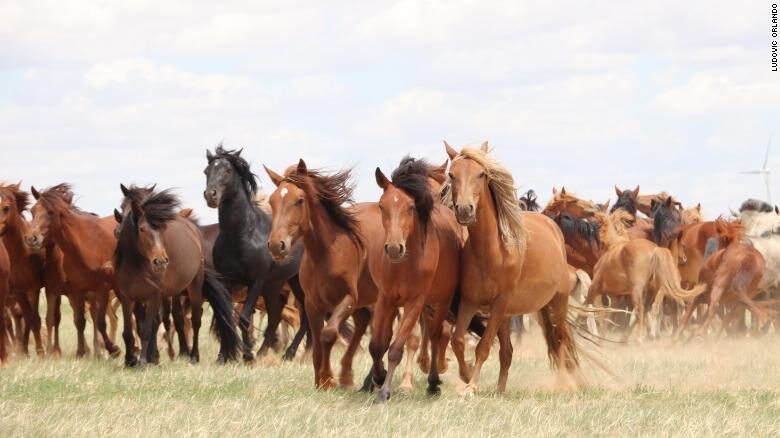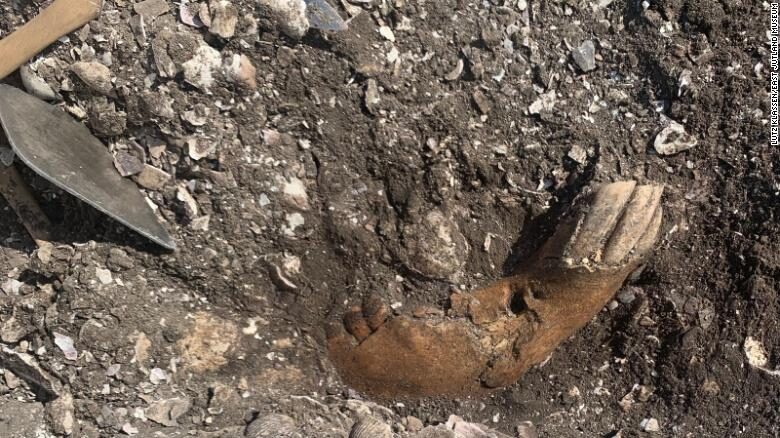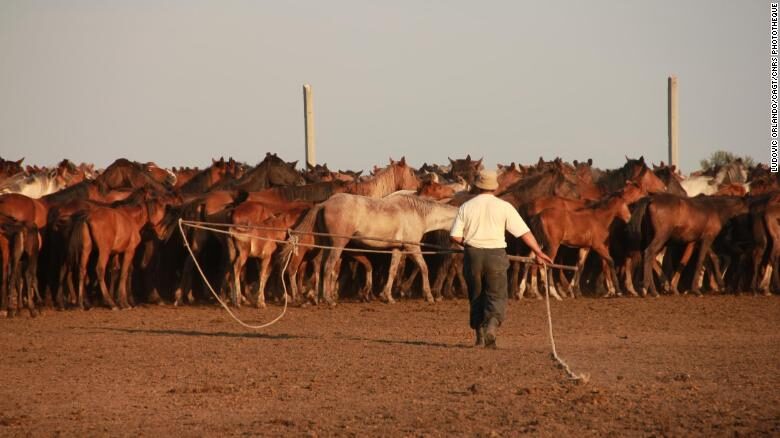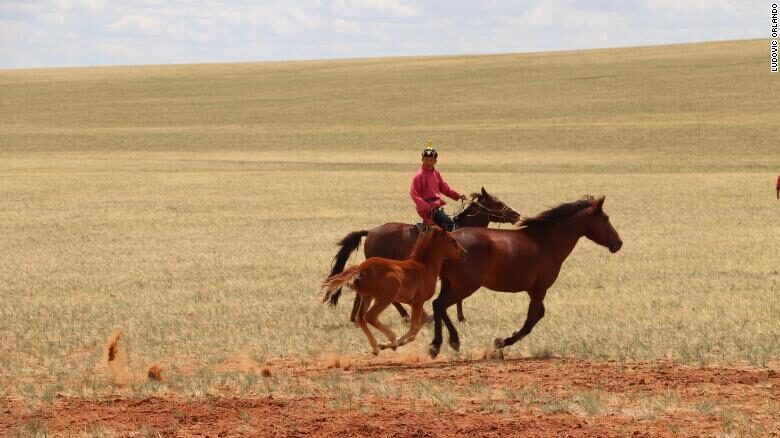
Horses are shown running in the steppes of Inner Mongolia, China.
The domestication of horses changed the course of human history, but scientists have tried for years to figure out when and where this crucial event happened. Now, evidence from a new study
using DNA analysis suggests horses were first domesticated 4,200 years ago in the steppes of the Black Sea region, part of modern-day Russia, before spreading across Asia and Europe in the centuries that followed.
It has been incredibly difficult to pin down when and where horse domestication occurred because
it's a less obvious shift than that seen with animals like domesticated cattle, which experienced a change in size. Instead, the researchers had to work off of indirect evidence, such as tooth damage that suggested the wearing of bridles or even horse symbolism across cultures, said lead study author and paleogeneticist Ludovic Orlando, research director at the French National Center for Anthropobiology & Genomics of Toulouse for University of Toulouse--Paul Sabatier in France.
"Tracing human activity in the archaeological record is a difficult task, and even more difficult when it comes to reconstructing ancient relationships with horses, from which we often have only fragmented material, like horse bones, available to study," said study coauthor William Taylor, an assistant professor and curator of archaeology at the University of Colorado Museum of Natural History. With this latest study, an international team of scientists collected and
sequenced genomes from the remains of 273 ancient horses found across Europe and Asia and compared them to the DNA of modern horses to determine their origin.
The study published Wednesday in the journal
Nature.
All modern domestic horses can be traced to ancestors from 4,200 years ago.Critical window for horse domesticationPrevious research suggested that the original home of domesticated horses was at the Botai site, in what today is northern Kazakhstan, in Central Asia, because it provided the oldest archaeological evidence of these animals. But DNA told a different story. The Botai horses, which lived 5,500 years ago, could not be traced to modern domestic horses. Other potential origin sites in Anatolia, Siberia and the Iberian Peninsula didn't pan out, either. Orlando and his team knew that the time period between 4,000 and 6,000 years ago was a critical window for investigating when horses became domesticated due to the dating of ancient horse remains, "but no smoking gun could ever be found," he said. The researchers broadened the search to provide a bigger picture,
studying DNA from ancient horses that lived between 50,000 BC and 200 BC. When this was compared with modern domestic horse DNA, the team was able to pinpoint a time and place. "Horse domestication was an absolute lightning strike in human history, leading to incredible, widespread, and lasting social transformations all across the ancient world," Taylor said. "Horses were an order of magnitude faster than many of the transport systems of prehistoric Eurasia, allowing people to travel, communicate, trade and raid across distances that would have previously been unthinkable."
The spread of domestic horsesEurasia was once the home of genetically distinct horse populations, but a dramatic shift occurred between 2000 BC and 2200 BC, the researchers said. A dominant genetic horse population appeared on the Western Eurasian Pontic-Caspian steppe of North Caucasus, east of the Dnieper River within the Don and Volga basins. This area is now part of Russia. This horse population then spread out and replaced the wild horse groups roaming across Eurasia within centuries."What our data show is that
between 4,600-4,200 years ago, herders located in the Don-Volga region found a way to increase the local horse reproductive pool," Orlando said. "That means that they could reproduce more and more such horses generation after generation. They also selected horses with specific traits."Within the horses' DNA was
evidence of domestication, including genes associated with more docile behavior, endurance, stress resilience and a stronger backbone to support more weight. All of these are connected with horseback riding in modern animals.

This horse mandible was excavated from the Ginnerup archaeological site in Denmark in June.
Horseback riding, as well as the invention of spoke-wheeled war chariots, likely enabled these horses to replace other populations within 500 years -- and forever changed human mobility and warfare.
"The reason why we are so much interested in horses is that they can probably be considered as one of the animals that most impacted human history," Orlando said. "This tight relationship that we have developed with this animal lasted until the early 20th century, a time when the motor engine took over transportation."
In the Mediterranean and Mesopotamia, horse-drawn chariots probably spread through trade and military conquest because horses were so crucial as transport animals, Taylor said. In places like Central and East Asia, horses also served a valuable purpose as livestock and traveled with migrating horse herders.

This image shows a farmer catching horses in north-central Kazakhstan.
Based on the environments where horses lived, "the domestication of horses made the steppes and prairies of the world into cultural centers, population hubs, and political powerhouses," Taylor said. "Nearly everywhere they were introduced, from the steppes of Asia to the Great Plains or the Pampas of the Americas, they reshaped human societies almost immediately."

Horses are shown running in the steppes of Inner Mongolia, China, in 2019.
Orlando and his team used innovative DNA techniques to distinguish this early horse population from so many others. The researchers want to eventually understand the entirety of how horses were domesticated, something Orlando and his colleagues are focusing on through the
Pegasus project. This could also help them learn how domestic horses were introduced to North and South America.
"Even though we now know (where) domestic horses first emerged,
the whole process of their expansion around the world and their breeding history into the hundreds of different types that we know today remains contentious," Orlando said. "Additionally, the horse was equally the animal of farmers, warriors and kings; they were found in rural and urban contexts alike, and
in extremely diverse environments, from the coldest Siberian range to the Nepalese mountains. We want to track how these various contexts have reshaped the horse biology."
Comment: See also: